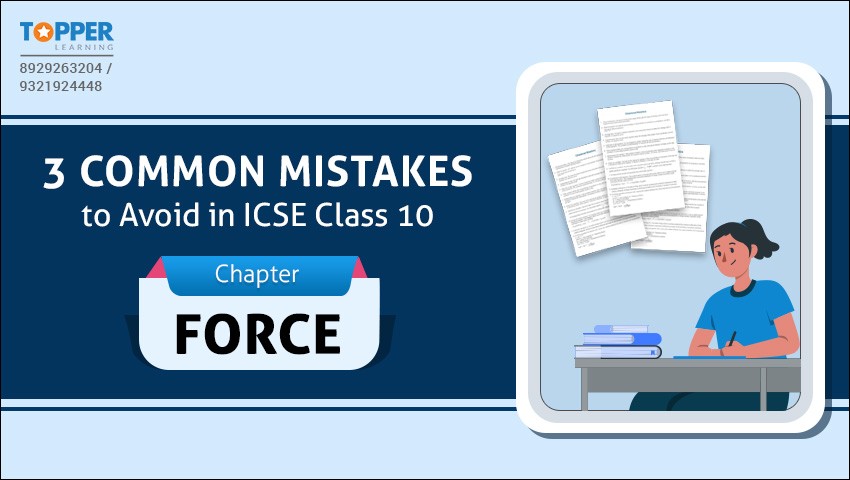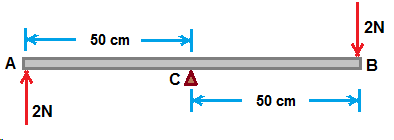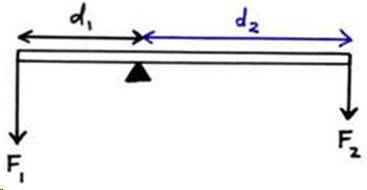3 Common Mistakes to Avoid in ICSE Class 10 - Chapter Force

In this blog post, we aim to highlight some common errors made by students in their ICSE physics papers related to the chapter force. The analysis is based on CISCE's evaluation of student performance.
By Topperlearning Expert 03rd Feb, 2024 | 12:17 pm
ShareIntroduction:
For the ICSE class 10th, Chapter force consists of some important topics such as the moment of force, force in equilibrium, and centre of gravity. In this chapter, we have seen how force causes physical changes or tends to change either the shape, size, or state of motion of an object. However, students often make some common mistakes while answering the questions from this chapter in their board exams.
This blog post aims to highlight these mistakes and provide insights on how to avoid them to ace their exam.
3 Common Mistakes Students Must Avoid.
Here are some of the mistakes, students must avoid while writing their answers.
Mistake 1: Errors while writing the definition.
For example: While answering questions such as “Define moment of force.” students made this simple error which must be avoided.
- The turning effect of the force is also known as the moment of the force, but students might incorrectly write it as the turning effect of a body.
- Some may refer to the point of application of force instead of the line of action of force.
- Some might lose their marks by simply not mentioning the axis of rotation or fulcrum with the turning effect of force.
- Also, students might incorrectly use the term displacement instead of perpendicular distance.
|
Solution with a mistake: Ans- The turning effect of a body is the product of the magnitude of the force and the displacement of the point of application of force from the axis of rotation/fulcrum.
|
Correct solution Ans- The turning effect of force (on a body pivoted) about an axis/fixed point/ a point or the product of the magnitude of the force and the perpendicular distance of the line of action of force from the axis of rotation/fulcrum. |
Mistake 2: Error while working on problems and questions from topic circular motion.
For example: While answering questions such as “Why is the motion of a body moving with a constant speed around a circular path said to be accelerated?.” students made this simple error which must be avoided.
-
Some students can explain that motion is tangential to the curved path with the help of a diagram but were unable to make it clear that the motion of a body moving with a constant speed around a circular path, would be accelerated.
-
Confusing centripetal force with centrifugal force and their respective directions.
|
Solution with a mistake: The motion of a body moving with a constant speed around a circular path is said to be accelerated because the speed of the body increases |
Correct solution: Because on a circular path the direction of motion changes continuously which changes the velocity of the body continuously.
|
Mistake 3: Error while writing System of Units.
For example: While answering questions such as “Write the relationship between the SI and CGS unit of moment of force.” students made this simple error which must be avoided.
-
Questions asked of this type can be quite direct and easy, but still, some students make mistakes while defining the units or make simple calculation mistakes while solving.
For example, some common mistakes are incorrectly relating the SI unit of moment of force (Newton-meter, N m) to the CGS unit of force (dyne) instead of the CGS unit of moment of force (dyn - centimeter, dyn cm).
Note: Dyne is a CGS unit for force, whereas “dyn” is the symbol to represent this unit.
-
Mistakes can be made due to confusion between SI and CGS units.
|
Solution with a mistake: 1 N m = 107 dyn Also, mistakes can be made while writing the power. 1 N m = 10-7 dyn cm |
Correct solution: 1 N m = 107 dyn cm or 1 dyn cm = 10-7N m |
By avoiding these common mistakes and developing a deeper understanding of the principles, students can improve their performance in related questions and exams.
Important tips for students.
Here are a few tips to ace their exam, for those who are going to appear for ICSE 10th board exams this year.
- Underline the keywords in the definition or in answering reasoning questions.
- Always write the correct unit for the final answer and express the final answer as per the requirement of the question. Express the answer only in SI units unless otherwise asked.
- Comprehend the key terms/technical terms/ keywords, laws and principles before memorisation.
- Practice concept-based and application-based questions regularly. Practice numerical problems starting from simple to complex that is from direct formula-based to application/understanding-based. Give more emphasis on solving numerical problems with understanding.
- Emphasis on practice by writing rather than just reading.
- Practice diagrams regularly and think logically before drawing ray diagrams. Discourage yourself from drawing rough hand sketches when the diagram is asked in the question.
- Use the first 15 minutes of reading time judiciously to understand what is asked in the question. Keep in mind or note every bit of information given in the question.
- Write to the point rather than beating around the bush.
- Do not change the numbering system given in the question paper while writing the answers on the answer sheet.
- Practice beginning a new question on a fresh page, or after leaving 8 to 10 lines.
- Practice solving previous years’ ICSE question papers and plenty of Sample papers.
Check out a free sample paper with a reference solution provided by the experts at Topper-Learning to ace your board exam.
Practice example
Some of the most asked questions from our ask-a-doubt platform, try to solve this on your own and check the detailed solution provided by our expert once you are done or feel stuck while answering.
Q 1. Two forces each of magnitude 2N act vertically upwards and downwards respectively at two ends of a uniform rod of length 1m which is pivoted at the center. Draw a diagram of the arrangement and determine the resultant moment of force about the midpoint of the rod.
Hint: For the given case, Identify the force at each end (2N upwards and 2N downwards), then calculate their moments around the midpoint by multiplying each force by its perpendicular distance.

Finally, find the resultant moment by considering the direction of each moment.
Experts on our Ask a Doubt platform have provided a detailed solution for this question. Click here to view.
Q 2. State and explain the principle of moments. Draw a diagram to illustrate.
Hint: In equilibrium, the sum of the anticlockwise moments is equal to the sum of the clockwise moments.

i.e., Clockwise moment = Anticlockwise moment
F2 x d2 = F1 x d1
Experts on our Ask a Doubt platform have provided a detailed solution for this question. Click here to view.
Q 3. How can torque be increased or decreased and what is a couple arm?
Hint: Imagine you're trying to open a door. Would it be easier if you pushed closer to the hinges or farther away? Think about how the strength and position of your push affect the door's movement – that's a clue to understanding torque!
Experts on our Ask a Doubt platform have provided a detailed solution for this question. Click here to view.
Conclusion
We hope you enjoyed reading this blog and learned something new today. Avoid these common mistakes while writing the paper. Also, check out our free resources and learning materials. At Topperlearning, we bring you unique e-learning experiences, providing quality resources to students all over the country. The study materials are available for CBSE, ICSE, and Maharashtra Board alongside the resources for competitive exams like JEE and NEET.
More from Education
Important Resources
- Education Franchisee opportunity
- NCERT Solution
- CBSE Class 9 Mathematics
- NCERT Solutions for class 10 Science
- Sample Papers
- CBSE Class 9 Science
- NCERT Solutions for class 10 Maths
- Revision Notes
- CBSE Class 10 Hindi
- CBSE Class 10 English
- CBSE Class 10 English
- CBSE Class 10 Social Studies
- CBSE Class 10 Science
- CBSE Class 10 Mathematics
- Career In Science After 10
- Career In Commerce After 10
- Career In Humanities/Arts After 10
- NCERT Solutions for Class 10
- NCERT Solutions for Class 11
- Business Studies Class 12 CBSE project





